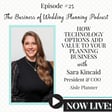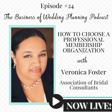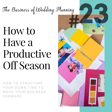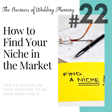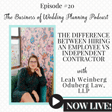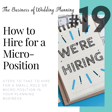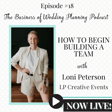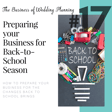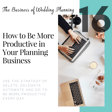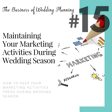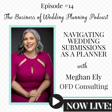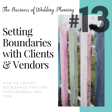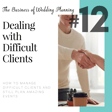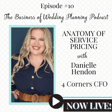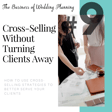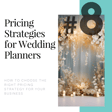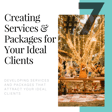
Developing Your Wedding Planning Business Brand
Title: Building Your Brand in Wedding Planning
Date: April 17, 2024
Host: Amber Peterson
Duration: 23:44
In this episode, Amber Peterson, seasoned wedding planner and marketing strategist, dives into the crucial aspects of branding for those embarking on or revamping their wedding planning business brand. With a decade-long wedding planner background as a marketing strategist for service-based businesses, Amber brings her knowledge to this second episode of our five-part series on starting a planning business.
Episode Highlights:
- Understanding Branding Basics:
- Common confusions among brand, branding, and marketing, setting a solid foundation for understanding their distinct roles in your business.
- Brand Development Journey:
- Discover the essence of brand development as Amber guides you through reflective questions designed to unearth what sets your business apart, core values, mission, and the unique stamp you wish to leave on your clients.
- Visual Branding Essentials:
- Learn about the significance of visual branding, including selecting the right logo, color palette, and typography to resonate with your brand's personality and appeal to your target audience.
- Cultivating an Online Presence:
- The importance of a cohesive online presence, from an aesthetically pleasing and navigable website to strategic social media use, highlighting the value of consistency across platforms for brand recognition and engagement.
- Authenticity in Branding:
- Embrace the power of authenticity as we conclude the episode with insights on how genuine representation of your brand attracts your ideal clients and fosters meaningful connections.
Resources Mentioned:
- Brand Development Checklist: This checklist will guide you through the nuances of brand development. It is available at Planner's Lounge Shop.
Next Episode:
Stay tuned for the next episode in our series, where Amber will delve into crafting an effective marketing strategy to elevate your wedding planning business.
About the Host:
With a decade of experience in wedding planning and extensive experience developing marketing strategies for service-based businesses, Amber Peterson is the owner/CEO of Planner’s Lounge. Amber’s journey in the wedding industry and her passion for business growth and development make her a resource for aspiring and growing wedding planners.
Subscribe and Follow:
Don’t miss out on invaluable insights and tips to start and grow your wedding planning business. Subscribe to the Business of Wedding Planning Podcast on your favorite platform and follow us for updates and exclusive content.
Contact Us:
We love hearing from our listeners! Share your thoughts, questions, or topic suggestions with us at info@plannerslounge.com
Disclaimer: Our recommendations and insights are based on research and personal experience in the marketing and wedding planning industry.
